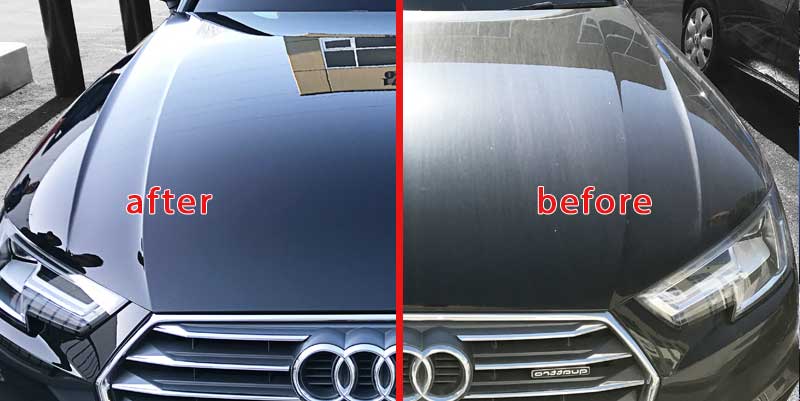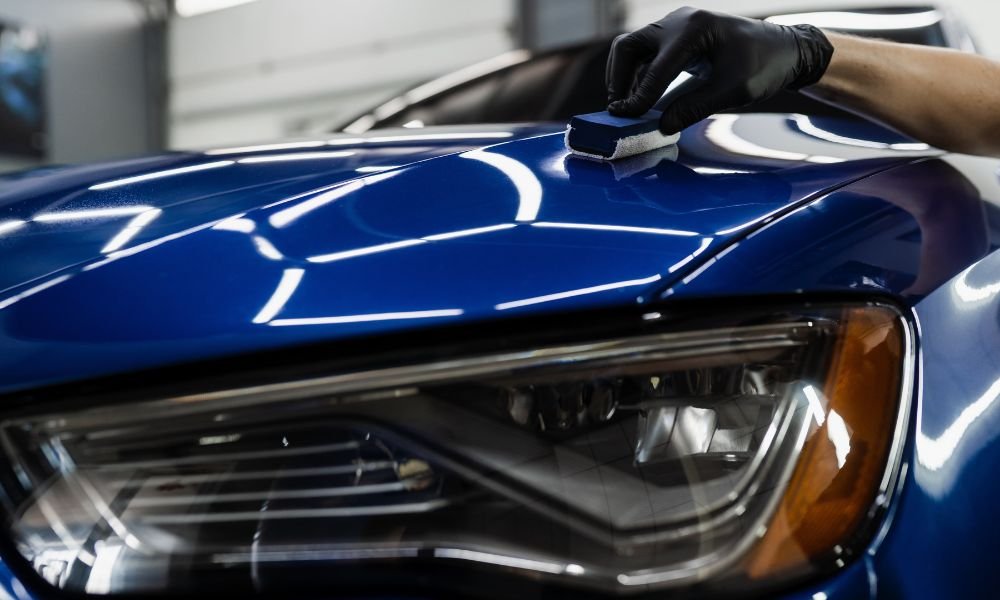Ceramic Layer vs. Standard Wax: Which Offers Better Security?
The dispute in between ceramic layer and typical wax for lorry security is one that values mindful assessment, especially in regards to toughness, resistance to environmental factors, and overall upkeep demands. While ceramic finishings promise extended durability and remarkable protection against a selection of dangers, conventional wax may interest those looking for a more affordable, albeit temporary, remedy. As we discover the nuances of each alternative, the ramifications of your option could have long lasting results on your lorry's appearance and maintenance regimen. What factors should influence your decision?
Summary of Ceramic Finish
Ceramic finish has actually gained substantial appeal among vehicle fanatics and professionals alike for its innovative safety high qualities. This innovative service is composed of a liquid polymer that chemically bonds to the automobile's factory paint, forming a durable layer of defense. Unlike traditional wax, which generally lasts for a few weeks to months, ceramic finishes can offer lasting protection for a number of years, relying on the item used and application approach.

While the preliminary price of ceramic covering might be more than that of conventional wax, the long-term benefits, consisting of sturdiness and decreased maintenance frequency, usually validate the financial investment. As automobile technology continues to evolve, ceramic layers have emerged as a favored option for those seeking optimal protection and durability for their cars.
Summary of Typical Wax
The attraction of standard wax lies in its simplicity and convenience of use, making it a preferred option among car owners seeking to boost their automobile's look and offer a fundamental level of security. Commonly stemmed from natural carnauba or synthetic polymers, typical wax forms a thin protective layer over the paintwork. The application process is simple, typically entailing a straightforward buffing with a microfiber cloth, making it accessible to both novice and knowledgeable users.
Typical wax products are readily available in various formulas, each developed to accommodate details needs, such as improving shine or giving water beading. The versatility of wax permits usage on various surface areas, consisting of paint, glass, and also plastic trim. While the application can be done by hand or equipment, the secret is to make sure a clean surface area for optimum attachment.
Nonetheless, one significant feature of standard wax is its reasonably brief lifespan contrasted to modern alternatives. Commonly offering protection that lasts from a few weeks to a few months, constant reapplication is needed to maintain its performance. In spite of these constraints, standard wax remains a prominent option for car fanatics who value the visual improvement it gives.
Key Defense Functions
When taking into consideration paint security for automobiles, it's crucial to recognize the vital functions that distinguish traditional wax from even more sophisticated alternatives like ceramic finishings. Among the key protective attributes of ceramic finishes is their longevity. Unlike wax, which commonly lasts a couple of weeks, ceramic coverings can withstand for several years, providing long-lasting protection against environmental contaminants.
Ceramic finishes create a hydrophobic surface area, fending off water and stopping dirt, gunk, and various other particles from sticking to the paint. This attribute not just boosts the automobile's appearance however also minimizes the frequency of washing. In addition, ceramic finishings supply exceptional UV security, shielding the paint from damaging sun direct exposure that can lead to fading and oxidation.
On the other hand, standard wax provides a much more short-term barrier against components yet lacks the resistance to scrapes and chemical discolorations that ceramic layers supply. While wax can boost gloss, its safety capabilities are restricted, specifically versus harsher environmental variables such as bird droppings, tree sap, and roadway salt. In summary, the key protection functions of ceramic coverings significantly outperform those of conventional wax, making them a superior option for durable vehicle treatment.
Application Process Comparison

In comparison, the application of ceramic finishes is much more intricate and time-sensitive, commonly needing specialist support for ideal outcomes. The car's surface area should be thoroughly cleaned up, decontaminated, and brightened to eliminate flaws before the finishing is applied. As soon as prepared, the covering is applied in numerous layers, with each layer calling for certain healing times, frequently boosted by warmth lamps. This thorough procedure can cover numerous hours to multiple days, depending on the variety of layers and preferred surface.
Inevitably, the choice in between wax and ceramic finishing hinges not only on defense levels but additionally on the time, competence, and sources readily available for their corresponding applications. - ceramic coating
Cost Evaluation and Long Life
Price plays a considerable duty in the decision-making process in between traditional waxes and ceramic finishes. Ceramic coverings usually regulate a greater upfront investment, ranging from address $500 to $2,000 relying on the top quality, brand, and expert application services. This preliminary price can be credited to the innovative innovation and materials made use of in ceramic formulations, which use premium longevity and security.
In comparison, typical waxes are more a lot more economical, typically setting you back between $20 to $100 for DIY applications. The durability of wax items is restricted, frequently calling for reapplication every few months to keep their protective high qualities. This persisting cost can gather over time, making wax much less cost-effective in the long run.
Ceramic coverings, while a lot more pricey originally, provide durable outcomes, commonly going beyond two to five years with appropriate maintenance. This longevity can give significant financial savings in time, specifically for lorry owners that prioritize security and aesthetic conservation - ceramic coating. Eventually, the selection in between ceramic coverings and standard waxes need to consider both first prices and long-lasting worth, factoring in the maintenance requirements and desired protection level for the automobile
Final Thought
In recap, ceramic coverings give exceptional defense for automobile paint contrasted to typical wax, offering improved sturdiness, resistance to ecological elements, and hydrophobic homes. While the first financial investment for ceramic coatings is higher, their long life and minimized maintenance requirements validate the price. Eventually, description for those looking for lasting automotive treatment and security, ceramic layers represent a much more reliable service than traditional wax, which uses only short-term advantages.
The discussion in between ceramic finish and typical wax for car security is one that values careful assessment, particularly in terms of resilience, resistance to ecological factors, and total maintenance needs.When taking into consideration paint security for automobiles, it's essential to understand the crucial functions that distinguish typical wax from more innovative alternatives like ceramic layers. In recap, the essential security functions of ceramic finishes significantly outshine those of typical wax, making them a remarkable choice for durable vehicle treatment.
Inevitably, the option in between standard waxes and ceramic finishings should think about both first prices and long-lasting value, factoring in the upkeep needs and wanted protection level for the automobile.
In recap, ceramic coatings give premium security for car paint compared to standard wax, offering boosted longevity, resistance to ecological factors, and hydrophobic homes.